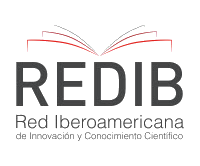The systemic-cybernetic paradigm in cognitive explanation
##plugins.themes.bootstrap3.article.main##
In the last century, The scientific method was centered in mas, energy and its conservation. The ruling paradigm was the theory of thermodynamics and its second principle, which indicates that events tend to generate states of maximum disorder (entropy) in systems. The current methodology was governed by the principles of analysis, summation, reactivity and mechanicity, because in general terms the organization of physical entities (whose science, physics, was the model to reproduce in others) results from the union or summation of elements pre-existing In 1948, Shannon suggests the possible relationship between entropy and information and establishes a formal analogy between them: just as entropy is a measure of disorganization, information is a measure of organization. For Wiener, founder of Cybernetics, the universe as a whole and the closed systems it contains tends to degrade and move from a state of organization and differentiation to others of chaos and uniformity. However, there are local enclaves inside whose direction appears opposite as a whole. In them there is a temporary and limited tendency to increase the complexity of your organization; life affirms and expresses itself in some of these. This is where the cybernetic explanation originates and takes meaning.














